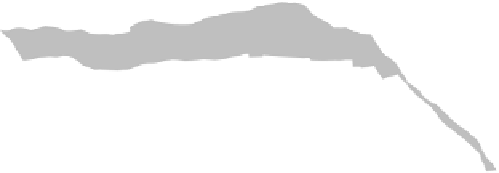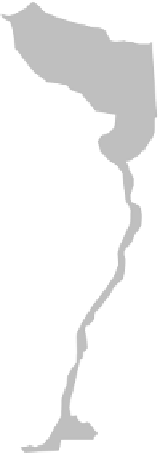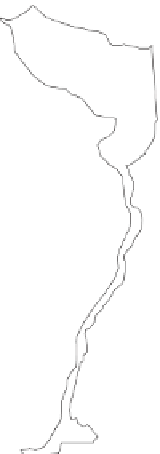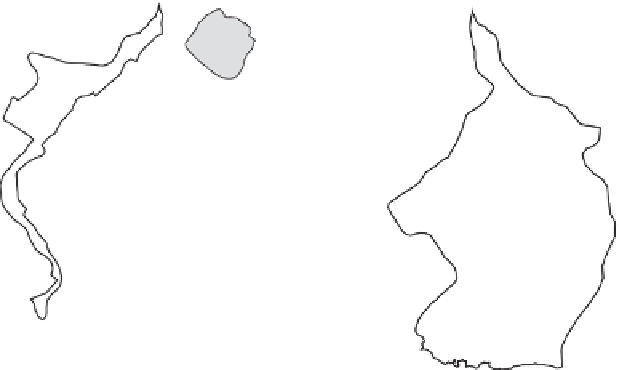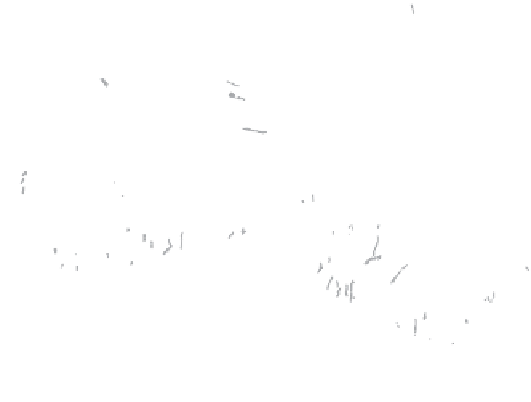Geoscience Reference
In-Depth Information
Figure 2.4 Neotectonic domains map of Australia (after Clark
et al
.
2011
a
, 2012) showing features
known or suspected of hosting displacement under the current stress field (grey lines). Neotectonic
domains are indicated by numbers: 1, Precambrian Craton and Non-reactivated Proterozoic Crust;
2, Sprigg Orogen; 3, Reactivated Proterozoic Crust; 4, Eastern Australian Phanerozoic Accretionary
Terranes; 5 Eastern Extended Continental Crust; 6, Western Extended Continental Crust; 7, Passive
Margin Extended Continental and Transitional Crust. Shading and hatching as per
Figure 2.1
shows
the domains in their broader distribution of non-extended cratonic crust in the central and western
parts, non-extended non-cratonic crust in the east, and extendedmargins aroundmuch of the continent.
2012) (
Figure 2.4
)
. Each domain relates to a distinct underlying crustal type and architecture,
broadly considered to represent non-extended cratonic and non-cratonic crust, as well as
extended crustal settings (
Figure 2.4
)
(cf. Johnston
et al
.,
1994
)
. Herein domains will be
referred to using the abbreviation D
x
, where
x
is the number of the domain (e.g., D1 is
Domain 1).
The Australian landscape reveals a marked disparity in its crustal response to imposed
tectonic stresses. For example, neotectonic faults in western and central Australia, which
are founded in cratonic crust (
Figure 2.4
- D1, D3), are typically spaced more than a
scarp length apart, not associated with historic seismicity, and displace a low, undulating
of the Mount Lofty and Flinders Ranges
(
Figure 2.4
- D2) are relatively closely spaced,
commonly associated with historic seismicity, and displace Neogene strata by up to a few





